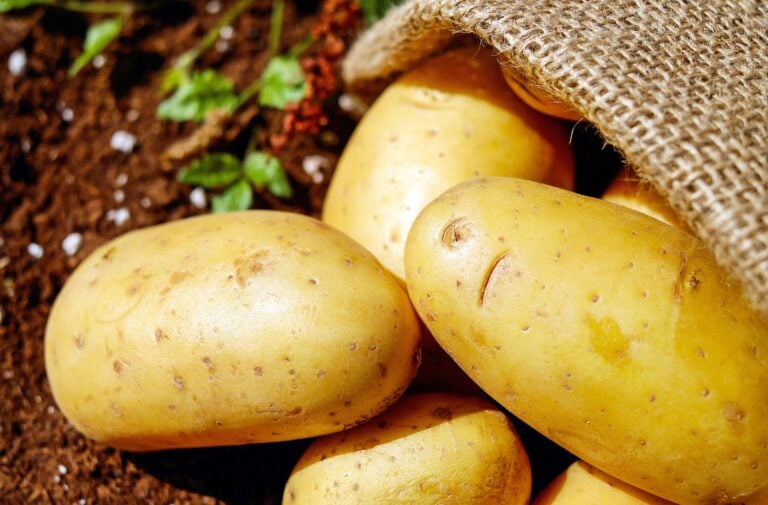A Guide to the Most Eco-Friendly Materials in Different Spheres of Life
 Choosing eco-friendly materials reduces waste and lowers environmental impact. That’s why many industries now prioritize sustainable options to protect natural resources. From plant-based fibers to recycled materials, innovative solutions replace harmful alternatives. Understanding these materials helps us make better choices for everyday products.
Choosing eco-friendly materials reduces waste and lowers environmental impact. That’s why many industries now prioritize sustainable options to protect natural resources. From plant-based fibers to recycled materials, innovative solutions replace harmful alternatives. Understanding these materials helps us make better choices for everyday products.
What Makes a Material Eco-Friendly?
The materials that are eco-friendly come from renewable, sustainable, or recycled resources. They minimize waste, reduce pollutant emissions, as well as have little environmental impact. Natural fibers such as bamboo, hemp, and organic cotton can grow rapidly without destroying resources. Recycling materials, like cork or recycled plastic, can help reduce garbage that goes to landfill.
Durability is a crucial element. Durable materials eliminate the need for regular replacements, thus reducing the overall amount of consumption. Hemp is a good example. It is durable, biodegradable, and requires less pesticides than conventional cultivars.
In this context, the debate between cannabis vs hemp usually revolves around their use. Whereas cannabis is cultivated for medicinal and recreational reasons, hemp is grown to produce paper, fiber, and sustainable textiles.
The efficiency of energy used in production is a factor too. Certain materials require less energy and water to process. For instance, cork harvesting does not harm trees, which makes it a sustainable choice. Selecting these types of materials can help reduce carbon footprints as well as promotes the health of our planet.
Natural Plant-Based Materials
Moving to plant-based materials can reduce consumption and promote sustainable production. They grow naturally, require less resources, and are lasting alternatives to synthetic ones. Here are a few of the greenest options.
Bamboo
Bamboo is among the fastest-growing species, which makes it a renewable source. Bamboo is a perennial plant that doesn’t need replanting. It also requires minimal water, making bamboo a sustainable alternative to wood that is traditionally used. Here are the reasons bamboo is an excellent sustainable option:
- It is a fast-growing plant that does not require replanting, which helps to avoid forest destruction.
- Does not require pesticides, which reduces the amount of chemical contamination in the soil and in the water.
- Naturally antibacterial, it is perfect for kitchenware, textiles and other household items.
Bamboo’s strength and flexibility makes it an ideal product for clothing, flooring, and biodegradable containers. The ability to regenerate rapidly ensures a constant supply without impacting the environment.
Hemp
Hemp is a robust and adaptable plant that requires just a few elements to grow. It has been used for a long time in textiles, ropes and ropes as in biodegradable and recyclable plastics. Here are a few most important reasons hemp being a green alternative:
- Rapidly grows with minimal water and without chemical fertilizers, which reduces environmental stress.
- Absorbs carbon dioxide, which makes it a non-carbon crop that aids in tackling climate change.
- Fabric that is strong and breathable softens with time and lasts longer than conventional cotton.
Hemp’s strength and natural resistance to pests make it an excellent choice over synthetic substances. Its versatility also allows it to be utilized in everything from packaging to clothing.
Organic Cotton
Organic cotton provides an environmentally sustainable alternative to traditional cotton farming that is renowned for its heavy use of pesticides and water. Contrary to conventional cotton, organic can be grown with natural methods that help ensure the protection of the natural environment. Here’s the reason why organic cotton is the better option:
- The plants are free of synthetic pesticides, which protect soil health and the quality of water.
- Utilizes crop rotation for natural pest control, encouraging biodiversity.
- Produces a soft, breathable fabric It is perfect for bedding and clothing.
Switching to hemp, bamboo, and organic cotton reduces the environmental impact and provides top-quality, environmentally friendly alternatives. Each choice towards sustainability contributes to a healthier environment.
Recycled Materials
Recycling helps to reduce waste, save resources and decrease the environmental impact. Contrary to single-use products, recycled alternatives give waste products new life and reduce environmental pollution and waste from landfills. Here are two environmentally friendly options that promote sustainability.
Cork
Cork is a renewable, biodegradable material derived from the oak trees that are cork. The process of harvesting does not cause harm to the trees, allowing them to grow in a natural way. This is why cork is an excellent choice for sustainable use:
- Trees grow even after harvesting, which makes cork a resource that is renewable for a long time.
- It’s lightweight, tough and naturally resistant to fire and moisture.
- Often used as flooring as insulation, flooring, and even yoga mats made of recycled materials.
Cork’s production is low in carbon footprint because the cork trees are able to are able to absorb carbon dioxide. The use of cork-based products helps sustain forest management and decreases the need to use synthetic products.
Upcycled Fabrics & Plastics
Upcycling recycles materials from the past into new products, which reduces the requirement for new resources. This process differs from traditional recycling in that it converts the waste into quality products with lesser energy use. The following are some of the advantages:
- Converts textiles that are discarded into clothing accessories, and household textiles.
- Recycles waste plastic into products that are durable, such as furniture and outdoor equipment.
- Reduces the impact of plastics by keeping non-biodegradable waste from the landfill.
Numerous fashion brands are using upcycled plastics and fabrics to make sustainable collections, which proves that trash can be useful again. The use of these materials can help reduce environmental damage while encouraging the concept of a circular economy.
Eco-Friendly Materials in Everyday Products
The use of sustainable materials is now extensively used in everyday items that help to reduce waste and help conserve resources. From clothing to household items, green choices have a lasting impression.
Fashion
Many brands use hemp or organic cotton as well as recycled fabrics to create clothes and accessories. These fabrics require less water, and they also decrease the effects of chemical substances and are therefore a green alternative to traditional textiles.
Home Goods
Cork flooring, bamboo furniture, and recycled plastics are sustainable, environmentally friendly alternatives. These materials reduce carbon footprints while also ensuring the quality and durability.
Personal Care
Sustainable beauty products emphasize organic components and recyclable packaging. CBD skin care brands typically utilize hemp-derived components and environmentally friendly packaging to minimize packaging waste.
The switch to sustainably produced materials in everyday items supports sustainable production and helps reduce the impact on the environment. Making small changes will make a difference to a better world.
Conclusion
Utilizing eco-friendly products can help to reduce waste, conserve resources, and help promote sustainability. From recycled textiles made from plant materials to repurposed items, minor changes in our selections can result in a big impact.
The support of brands that promote sustainable materials will lead to sustainable production and a healthier environmental footprint. Through mindful buying and making purchases that are sustainable, we help to create an environment that is healthier for the next generations. Each step towards sustainability is important; start with a simple change today.

